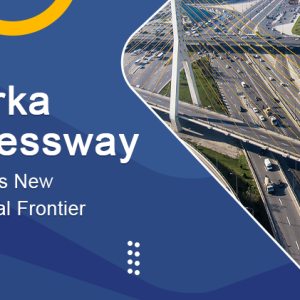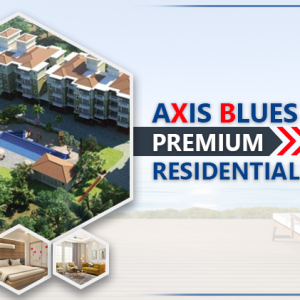Table of Contents
One of the important choices that prospective buyers must make when investing in real estate is deciding between a property that is still being built and a ready-to-move property. Every option has benefits and drawbacks, and being aware of these particulars is essential to make an educated investing choice. In this blog, we’ll examine the differences between properties that are still in the planning stages and those that are already available for sale, taking into account a range of factors like cost, risk, timeline, and more.
Cost Considerations
Under-Construction Property:
- One of an under-construction property’s key draws is that it typically has a cheaper upfront cost than ready-to-move properties. In order to entice buyers during the construction process, developers frequently offer alluring payment options and booking incentives.
- During the construction phase, buyers may profit from property appreciation, which could result in larger returns on investment once the property is finished.
Ready-To-Move Property:
- Properties that are already completed and ready to move into typically cost more money. The convenience of moving in without any delays or other costs linked to building more than offsets the greater cost.
Timeline and Possession
Under-Construction Property:
- The uncertainty around the possession date is the largest disadvantage of making an investment in a property that is still being built. Regulation permissions, bad weather, or financial difficulties are just a few of the factors that might cause construction projects to be delayed.
- However, buyers typically have the ability to stagger their payments during the building period, which can be an advantage for individuals with budget constraints. This can cause irritation and financial strain on buyers who may have arranged their finances around the anticipated possession date.
Ready-To-Move Property:
- The main benefit of ready-to-move-in properties is that purchasers can move in as soon as the transaction is complete. It is perfect for people who need a property immediately or don’t want to deal with the headache of waiting for construction to be finished because there are no delays or unknowns involved.
Quality and Customization
Under-Construction Property:
- One benefit of purchasing a property that is still under construction is the opportunity to modify features like the interior decor, furnishings, and fittings. You can modify the property to suit their preferences and requirements.
- However, to make sure that the construction quality fulfils the expectations, buyers should carefully investigate the reputation and track record of the developer.
Ready-To-Move Property:
- Before making a purchase decision, purchasers can physically check a ready-to-move property. They may evaluate the level of craftsmanship, the quality of the materials, and the general condition, lowering the possibility of any unpleasant surprises.
- Even though ready-to-move properties have few customization choices, purchasers may still be able to haggle over specific details with the seller.
Legal and Regulatory Considerations
Under-Construction Property:
- The terms and conditions of the builder-buyer agreement must be carefully read by purchasers of properties that are still under construction. It’s important to comprehend the consequences for project delays, the compensation offered in the event of non-delivery, and the schedule for completion.
- It is essential to do legal due diligence to confirm that the project has received all required approvals and clearances from relevant authorities.
Ready-To-Move Property:
- There is less uncertainty surrounding ready-to-move properties in terms of legal and regulatory issues. Without worrying about the project’s approval status, buyers can transfer ownership and take immediate possession of the property.
The Pros and Cons Of Ready-To-Move And Under-Construction Properties
Homebuyers frequently have to choose between ready-to-move residences and under-construction properties in the competitive real estate market. Each choice has a unique set of benefits and drawbacks that affect the overall purchasing process and the results of investments. In order to assist potential purchasers in making educated judgments, we will thoroughly examine the advantages and disadvantages of both ready-to-move and under-construction properties.
Ready-To-Move Properties:
The term “ready-to-move” refers to homes that are completely finished and ready for occupants. Let’s explore the benefits and disadvantages of purchasing such properties.
Pros:
Instant Gratification:
The instant gratification that ready-to-move properties offer is one of their most important benefits. The need to wait for construction to be finished is eliminated, allowing buyers to move in immediately after the purchase. This is especially advantageous for people who want to avoid the difficulties of temporary housing or who urgently need a new place to live.
Better Visualisation:
One benefit of buying a ready-to-move-in property is that you may personally check it before deciding to buy. You can then clearly see the layout, design, level of construction, and finishing. There are fewer chances of any change in the design you have chosen earlier because you can see exactly what you are purchasing.
Rental Income:
A ready-to-move property gives investors who are thinking about buying rental homes the chance to start collecting rent right away. You can start benefiting from your investment without delay if renters move in straight away.
Cons:
Higher Costs:
Ready-to-move properties are frequently more expensive due to their ease and quick availability. Compared to properties still being built, these properties typically cost more. Before making a choice, buyers should thoroughly assess their financial capacity and budget.
Limited Customisation:
Because the property has already been built, it may be difficult or expensive to make significant changes or adaptations. Although a few small adjustments can still be done, those wishing for comprehensive personalization may have fewer possibilities.
Potential Wear and Tear:
Depending on the age of the property, there may be some wear and tear that calls for upkeep and remodeling. Before making a purchase, buyers should perform a comprehensive assessment and weigh the cost of necessary repairs.
Under-Construction Properties:
Properties that are still being built or are in the planning stages are known as under-construction properties. Let’s examine the benefits and drawbacks of purchasing such properties.
Pros:
Lower Initial Investment:
The relative lower upfront cost of under-construction properties is one of their key draws. Developers frequently provide purchasers with budget-conscious consumers with enticing payment options and booking incentives.
Customization Options:
Choosing finishes, floor plans, and other features for a property that is still being built provides you with the advantage of tailoring it to your needs and tastes. This degree of personalization might assist in building a house that exactly matches your concept.
Potential Capital Appreciation:
The property’s value might increase during the construction period, offering better returns on investment than ready-to-move properties. For long-term investors, this appreciation potential may be attractive.
Cons:
Uncertainty and Delays:
The uncertainty around the possession date is one of the main issues with properties that are still under development. Delays in construction projects can occur for a number of reasons, including bad weather, labor problems, or regulatory obstacles. Buyers who may have structured their money around the anticipated possession date may get frustrated and put under financial strain as a result.
No Immediate Possession:
Property buyers who purchase under-construction homes must be ready to wait for the building to be finished before they can move in. Depending on the size and complexity of the project, the completion time could be months or even years.
Quality Concerns:
The construction and materials used may not have been of the highest caliber if the finished property cannot be physically inspected. Buyers should conduct a comprehensive investigation into the developer’s reputation and track record in order to reduce this risk.
Conclusion:
The decision between a ready-to-move-in property and a property that is still being built depends on personal preferences, available funds, and risk tolerance. While properties that are still being built provide personalization options and possible financial growth, ready-to-move properties give instant gratification and certainty. Buyers should perform extensive research, think about their long-term objectives, and, if necessary, seek professional guidance in order to make an informed purchase. Real estate investing may be a profitable and successful endeavor with careful planning.
Check: Ready To Move 3 Bhk Residential Flat Gurugram
FAQs
What is a ready-to-move property?
A real estate unit that is completely finished and ready for immediate occupancy is known as a ready-to-move property. As soon as the purchasing procedure is complete, buyers can move in.
What is an under-construction property?
A real estate project that is still being developed or is in the planning stages is referred to as an “under-construction property.” These homes are bought by buyers before they are completely built.
What are the advantages of a ready-to-move property?
A ready-to-move property has the following benefits:
- Quick gratification: No waiting period before moving in.
- Better visualization: Prior to choosing, buyers can visit the property in person.
- Rental revenue: Investors can immediately begin to generate rental money.
What are the disadvantages of a ready-to-move property?
The following are disadvantages of a ready-to-move property:
- Higher prices: Due to their instant availability, ready properties frequently carry a premium.
- Limited customization: It may be difficult to make considerable changes.
- Potential wear and tear: Depending on how old the property is, upkeep and renovations may be necessary.
What are the advantages of an under-construction property?
A property that is still being built has the following benefits:
- Lower initial investment: Under-construction properties typically have lower upfront expenditures.
- Options for customization: Customers can select finishes, layouts, and other elements based on their preferences.
- Potential capital growth: The property’s worth might increase while it is being built.
What are the disadvantages of an under-construction property?
An under-construction property has the following drawbacks:
- Uncertainty and delays: Construction projects may experience delays due to a number of causes, which may affect the dates of possession.
- Buyers must wait until the construction is finished, which might take months or years, before taking possession.
- Concerns about quality: Purchasers can be unsure about the construction’s calibre and the materials’ viability.
Are under-construction properties riskier to invest in than ready-to-move properties?
Due to probable delays and uncertainty, properties that are still under development do include some inherent risks. However, these risks can be reduced by doing extensive study, selecting reliable developers, and examining the project’s legal and regulatory elements.
How can buyers ensure the quality of under-construction properties?
By investigating the developer’s track record, touring their previous projects, and reading client testimonials, buyers may confirm the caliber of residences that are still under development. Additionally, consulting a professional and performing legal due diligence might boost investor confidence.
Are there any financing differences between under-construction and ready-to-move properties?
For properties that are being built or are ready to move into, there may be several financing choices. For properties that are still being built, some developers provide tempting payment arrangements. Buyers of residences that are ready to move into often need to make arrangements for immediate payment or obtain a mortgage.
Can buyers negotiate on the price of a ready-to-move property?
While it is feasible to negotiate the price of a ready-to-move property, the flexibility may be lessened in comparison to residences that are still under construction. Due to the ease of rapid possession, the seller can be less ready to bargain on price.
Is there a chance of hidden costs in under-construction properties?
Yes, there can be additional fees for amenities, taxes, or other expenditures associated with properties that are still under development. Before making a choice, buyers should carefully analyze the builder-buyer agreement and request clarification on all fees.
Can buyers avail of tax benefits when investing in under-construction properties?
As per the current tax legislation, buyers can indeed take advantage of tax savings on house loans for residences that are still under construction. However, these advantages won’t kick in until the property is finished and in possession of the owner.
Are under-construction properties eligible for home loans?
Yes, banks and other financial institutions do offer mortgage loans for homes that are still under development. The loan disbursement process, which is related to building milestones, may, however, be different from that for ready-to-move residences.
Which option is better for investors: under-construction or ready-to-move properties?
The decision is based on the investor’s financial objectives, risk tolerance, and time horizon for investing. While ready-to-move properties offer immediate rental income, those still under construction may have a higher potential for value. Investors should undertake a cost-benefit analysis and carefully evaluate their goals.
Can buyers expect discounts or offers on under-construction properties?
To draw purchasers to residences that are still being built, developers may offer alluring discounts, flexible payment options, or other promotional offers. Before making a choice, buyers should enquire about current deals and assess their financial sustainability.



